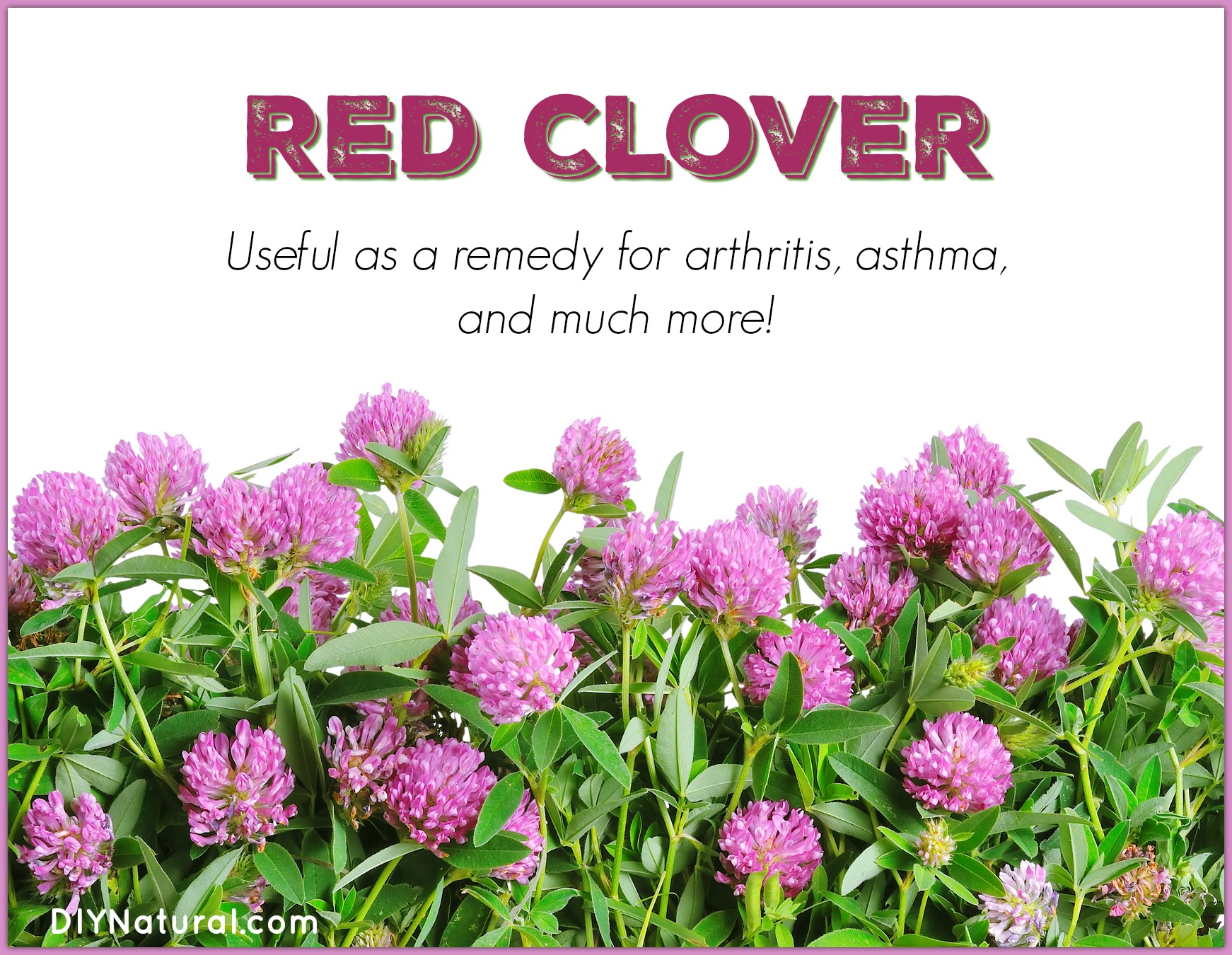
Natural Remedy for Arthritis and Asthma
On our farm we have moved out of the peak of rose harvesting season and into the thick of red clover picking.
As a child I remember sitting with my friends on the ground out beyond the playground equipment daring each other to eat the red clover. I remember pulling the purple florets out of the main flower head and sucking their white, fleshy ends. This is where the nectar is pooled and we would enjoy a sweet, floral taste as our reward. As we grew older we were told to leave the flowers alone. There was a rumor that you could get “worms” from sucking on the red clover flowers. I wonder how many of those types of rumors get started in error because the adults wish to discourage childish experimentation in the natural world?
Red Clover – A Useful Herb
Red clover (Trifolium pratense) is an herb that I approached with fond memories when it came time to learn about it as an adult. The rumors had interrupted my enjoyment of the plant for a number of years and there was an odd sensation of déjà vu when I began to experiment with it again just 10 years ago.
There are many reasons we should be enjoying the nectar and much more from this plant. I have introduced my children to the joys of sipping the nectar of the red clover plant and I have no intention of telling them a story to get them to stop!
Red clover is in the fabaceae family. This means it is closely related to our common peas and beans. The flowers may seem different than those of your peas, but look more closely and you will see that each purple head is made up of many pea flowers all packed together.
Red Clover and Nitrogen
Because it is in the fabaceae family, red clover has a special relationship with nitrogen. The plants in this family have the ability to pull nitrogen out of the atmosphere and turn it into useable fertilizer. They do this with the help of a special type of bacteria that make their home in family member roots. It is for this reason that many people plant peas and beans as companion plants with other crops in their gardens. Why not make use of free nitrogen rather than introducing it in chemical form?
The presence of red clover in the field of my elementary school now tells of more than just a sweet snack. The soil there had been reclaimed from old farm land. It was clearly low in nitrogen because the red clover was so prevalent. The job of red clover is to move into disturbed areas and “fix” the soil, providing cheap fertilizer to the plants that move in after it.
Allowing a little bit of red clover to grow in your garden can be a good thing. While allowing the free fertilizer to benefit your plants you will also be gaining a bit of shade. The roots will help hold moisture from the last rain, making your garden more drought tolerant than it would be if you kept it perfectly weeded.
5 Ways to Use Red Clover
While you give room for red clover you may also like to know that it can be used in the following ways:
1. In tea – The flowers have long been used as a blood cleanser, fertility tonic, and for liver and gall bladder support. The flowers are very helpful for inflammatory situations like arthritis and gout. They also make a good addition to cold and cough formulas, or as a support for those with asthma.
2. As a flour additive – You can dry the flowers and grind them into a powder. Mixing them into your flour as you bake adds a chewy texture and slight sweetness.
3. Added to salads – The leaves and the flowers can both be added to salads for their nutrition, flavor, and color.
4. Added to soups – The leaves are high in protein and can be added to the liquid of your broths and stocks.
5. As a vitamin supplement – You can also pull the individual flowers from the flower heads (like when you were a child) and add them to rice dishes and casseroles. Red clover is high in both vitamins and minerals so they make a perfect vitamin supplement.
As I pick the red clover for the next few weeks I will wonder how many others are also spending the morning watching the sun come up as they gather these beautiful and useful flowers.
Learn More About Using Local Plants to Heal
A NOTE FROM MATT & BETSY: If you desire to be more self-sufficient with your home health care, you need to check out Dawn’s book, Heal Local: 20 Essential Herbs for Do-It-Yourself Home Healthcare. Dawn takes the stress out of DIY wellness by showing you how to treat common ailments with local and regional plants. Get the book here!
*******




I have tooooo many dandelions in my yard, and a problem neighbor, and I was wondering if red clover would help squeeze our the dandelions? How tall does clover grow. I can have anything higher than 18″ in my yard according to the city ordinance.